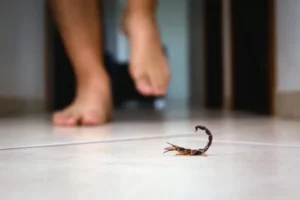Home / Blog / Roof Rats Versus Norway Rats: Which are Invading Your Home?
Roof Rats Versus Norway Rats: Which are Invading Your Home?

Scientifically reviewed by Daniel Baldwin, BCE, CCFS, CP-FS
-Published on March 27, 2023
-Updated on July 13, 2023
The most common types of rats to invade a house are Norway rats and roof rats, which look and behave differently from one another. When the weather gets cooler, either rat species can enter a house for the same reasons: they seek shelter, food, and water. Learn about the differences between Norway rats and roof rats, their dangers, and how to get rid of them.
What’s the difference between a roof rat and a Norway rat?
Norway rats and roof rats are commonly mistaken for each other, but they’re different in terms of the kinds of shelter they seek, how they get into your home, and their appearance.
What these rats have in common is that both types are omnivorous, nocturnal creatures and will eat whatever food they can find. Both species are thought to be color-blind and rely mainly on their sharp senses of smell, taste, touch, and hearing than their sight.
What does a Norway rat look like?
A Norway rat has coarse fur that’s usually brown or dark gray on the backside, with a lighter shade of the same color on the underside. Its tail has no hair, is pink or brown, and measures a few inches shorter than its body. The snout of a Norway rat is blunt. Their ears are small, with short hair covering them.
Norway rats are bigger than roof rats. While an adult roof rat’s body measures about 15’ in length, an adult Norway rat can grow as large as 17” long.

What does a roof rat look like?
Roof rats typically have soft, smooth black or brown fur, with areas of black spots mixed in. Their hairless, scaly tails are longer than their head and body length. Roof rats have pointed snouts and ears that are large with little to no hair covering them.

Norway rat vs. roof rat droppings
One way to tell them apart is by taking a look at their droppings. Norway rat droppings are about an inch long and have blunt ends. They look like dry raisins. Roof rat excrement is pointier, with a banana-like shape, and is half the size of Norway rat droppings.
Do Norway rats and roof rats live together?
Norway and roof rats do not generally live together because these species prefer different nesting habitats. They live at different heights; roof rats like higher places and Norway rats prefer basements and ground floors or garages. If the food sources are abundant, Norway rats and roofs can sometimes occupy similar general areas. In some areas, such as in the warmer southern states and near the coast, the two species have been found living in the same locations.
How to get rid of a rat infestation
The most effective way to rid your home of a rat infestation is with the help of a professional pest control company. Some ways to lessen the number of rodents entering your house are:
- Rat traps: Baited traps may kill some rats, but often a rat will take and eat the bait while escaping the trap. If the bait is poisoned, the rats will die back in the nest, making your home smell awful as the rodent decomposes within a wall or other space.
- Seal up all gaps, cracks, and holes around your foundation, roof, gutter lines, windows, and doors to help prevent more rodents from entering your home.
- Remove all sources of potential food for rats. Sweep up often, and seal up all food in airtight containers, especially pantry items that comes in thin cardboard packaging.
Rodent infestation FAQ
Some of the most frequently asked questions about rodent infestations pertain to Norway and roof rats, the most common type of rat found in home infestations.
How fast do rodents reproduce?
Rodents can reproduce rapidly, expanding their population in your home within months. Most rodents reach their sexual maturity when just a few months old. A large infestation can occur in a short period if homeowners don’t take quick action against an infestation.
Do rats spread diseases?
Rats in the home are a dangerous health hazard, as they are potential carriers of diseases that can infect humans. Some of the illnesses that can be spread by rodents include:
- Hantavirus
- Leptospirosis
- Lymphocytic Choriomeningitis
- Plague
- Rat-Bite Fever
Where might rats nest in my home?
Roof rats are excellent climbers who prefer making their homes above ground. They’ll typically invade a house and nest in attics, wall voids, soffits, and piles of clutter in high places.
Norway rats aren’t very good climbers. They tend to stay closer to the ground, living near sewers, in basements, and on lower floors of a home.
Pest control services
The safest and most effective method for ridding your home of rodents is by working with the professionals at Hawx Pest Control. Our technicians know which types of rats are entering your home to create nests and reproduce. We use the most modern methods for rodent control without endangering your family or pets. Contact us today for a free estimate.
Related Articles
Visit our blog to learn more.
→






